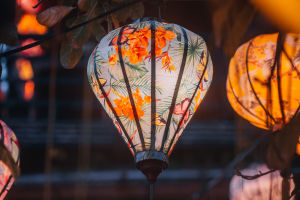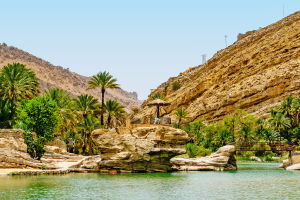Hey Lykkers! Have you ever thought about how closely our lives are linked to nature? Our future depends on it.
Biodiversity, the variety of life forms on Earth, is a treasure we can't afford to lose. It forms the foundation for the world's economy and is vital to our survival.
But if we lose it, we risk everything—health, resources, and even stability.
The Cost of Losing Biodiversity
When forests are destroyed, we lose vital carbon sinks that help slow down climate change. Forests used to absorb a significant portion of global carbon emissions each year, but that trend is shifting. In just six months of 2022, deforestation covered more than 1,500 square miles. Additionally, nearly 40% of global conflicts are driven or intensified by the depletion of natural resources.
Biodiversity also helps us cope with other crises like climate change and conflict. It provides jobs and economic value. For example, the global fishing industry directly supports 60 million jobs, and for every job in fishing, over 2.5 more jobs are created in related industries. These jobs are especially important in developing countries, where the majority of the workforce relies on natural resources for a living.
The Economic Risks of Losing Nature
We can't ignore the economic risks of losing biodiversity. Just look at Malaysia, one of the most biodiverse countries in the world. A recent report cautioned that if Malaysia's ecosystems were to collapse, the country could face economic losses of up to 6% of its GDP annually by 2030—an impact similar in scale to the financial blow experienced during the 2020 COVID-19 pandemic.
A study by the Central Bank of Malaysia also revealed that more than half of the commercial loans in the country are given to sectors that depend heavily on natural ecosystems. This shows how closely tied our economy is to the health of the environment.
Why We Need to Value Nature
We often overlook the value of nature. Natural capital, like forests, water, and biodiversity, is undervalued and poorly understood. For example, logging might boost a country's GDP in the short term, but it's depleting the country's wealth in the long run.
Luckily, there's a way to address this—by measuring natural capital. This approach allows us to understand the true economic value of nature and guide investments toward more sustainable practices that protect the environment while supporting economic growth.
The Role of Natural Capital Accounting
Natural capital accounting is a way of measuring and reporting on the stocks and flows of nature's assets. It helps decision-makers understand how environmental health impacts the economy. The Global Sustainability Program is providing governments and financial sectors with the tools and expertise needed to incorporate natural capital into their policy-making processes.
It's clear that natural resources are the backbone of many industries. Over half of global GDP relies on ecosystem services like pollination, water filtration, and raw materials. In low-income countries, renewable natural capital—like forests and fisheries—makes up a significant portion of national wealth. Protecting this wealth is not just about conservation; it's about securing our economic future.
The Importance of Protecting Biodiversity for All of Us
Let's take food production as an example. More than 75% of food crops depend on animal pollination, yet over 40% of known insect species have declined in recent decades. Without biodiversity, our food systems would collapse.
That's why protecting and restoring nature is not a charity effort; it's essential for our economy and our survival. At the UN Biodiversity Conference (COP15), we discussed how we can use tools to measure the economic contribution of biodiversity and influence economic decisions. By doing so, we can guide investors and policymakers to make decisions that ensure future prosperity.
How Biodiversity Drives Employment and Economic Growth
Biodiversity isn't just about ecosystems; it also supports employment and growth. For example, Yemen's fishing industry was severely damaged by a decade of conflict, leaving millions without food security. A \$45 million grant was provided to support the sustainable rebuilding of Yemen's fishing industry.
The project worked with local communities and fishing associations to create a more sustainable fishing system, boosting employment and preserving the fish populations that people rely on.
Protecting Nature: A Win-Win for the Environment and Economy
Protecting biodiversity isn't just good for the planet—it's good for the economy. Over 3 billion people rely on the ocean and coastal biodiversity for protein and their livelihoods, but 90% of global marine fisheries are either fully exploited or overfished. By protecting marine biodiversity, we can ensure sustainable food sources and livelihoods for future generations.
Conclusion: The Future of Biodiversity is in Our Hands
Biodiversity and climate change are closely connected, and both need urgent attention. When one worsens, the other accelerates. We can't afford to treat them as separate issues—we must address them together. Tools such as the Country Climate and Development Reports (CCDR) are assisting governments in identifying natural solutions to these interconnected challenges.
For example, mangrove forests act as natural barriers against storms, protect coastal communities, and sequester carbon.
We need to take action now, Lykkers. Protecting biodiversity is protecting our future.
Let's keep the conversation going—what do you think we can do in our daily lives to help protect biodiversity? Let us know your thoughts!


